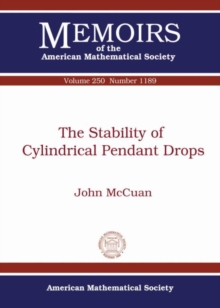
Abstract Band Method Via Factorization, Positive and Band Extensions of Multivariable Almost Periodic Matrix Functions and Spectral Estimation Paperback / softback
by Leiba Rodman, Iiya Spitkovsky, Hugo J. Woerdeman
Part of the Memoirs of the American Mathematical Society series
Paperback / softback
Description
New versions are developed of an abstract scheme, which are designed to provide a framework for solving a variety of extension problems.
The abstract scheme is commonly known as the band method.
The main feature of the new versions is that they express directly the conditions for existence of positive band extensions in terms of abstract factorizations (with certain additional properties).
The results allow us to prove, among other things, that the band extension is continuous in an appropriate sense.
Using the new versions of the abstract band method, we solve the positive extension problem for almost periodic matrix functions of several real variables with Fourier coefficients indexed in a given additive subgroup of the space of variables.This generality allows us to treat simultaneously many particular cases, for example the case of functions periodic in some variables and almost periodic in others.
Necessary and sufficient conditions are given for the existence of positive extensions in terms of Toeplitz operators on Besikovitch spaces.
Furthermore, when a solution exists a special extension (the band extension) is constructed which enjoys a maximum entropy property.A linear fractional parameterization of the set of all extensions is also provided.
We interpret the obtained results (in the periodic case) in terms of existence of a multivariate autoregressive moving averages (ARMA) process with given autocorrelation coefficients, and identify its maximal prediction error.
Another application concerns the solution of the positive extension problem in the context of Wiener algebra of infinite operator matrices.
It includes the identification of the maximum entropy extension and a description of all positive extensions via a linear fractional formula.
In the periodic case it solves a linear estimation problem for cyclostationary stochastic processes.
Information
-
Available to Order - This title is available to order, with delivery expected within 2 weeks
- Format:Paperback / softback
- Pages:71 pages, bibliography, index
- Publisher:American Mathematical Society
- Publication Date:30/09/2002
- Category:
- ISBN:9780821829967
Other Formats
- PDF from £50.40
Information
-
Available to Order - This title is available to order, with delivery expected within 2 weeks
- Format:Paperback / softback
- Pages:71 pages, bibliography, index
- Publisher:American Mathematical Society
- Publication Date:30/09/2002
- Category:
- ISBN:9780821829967










